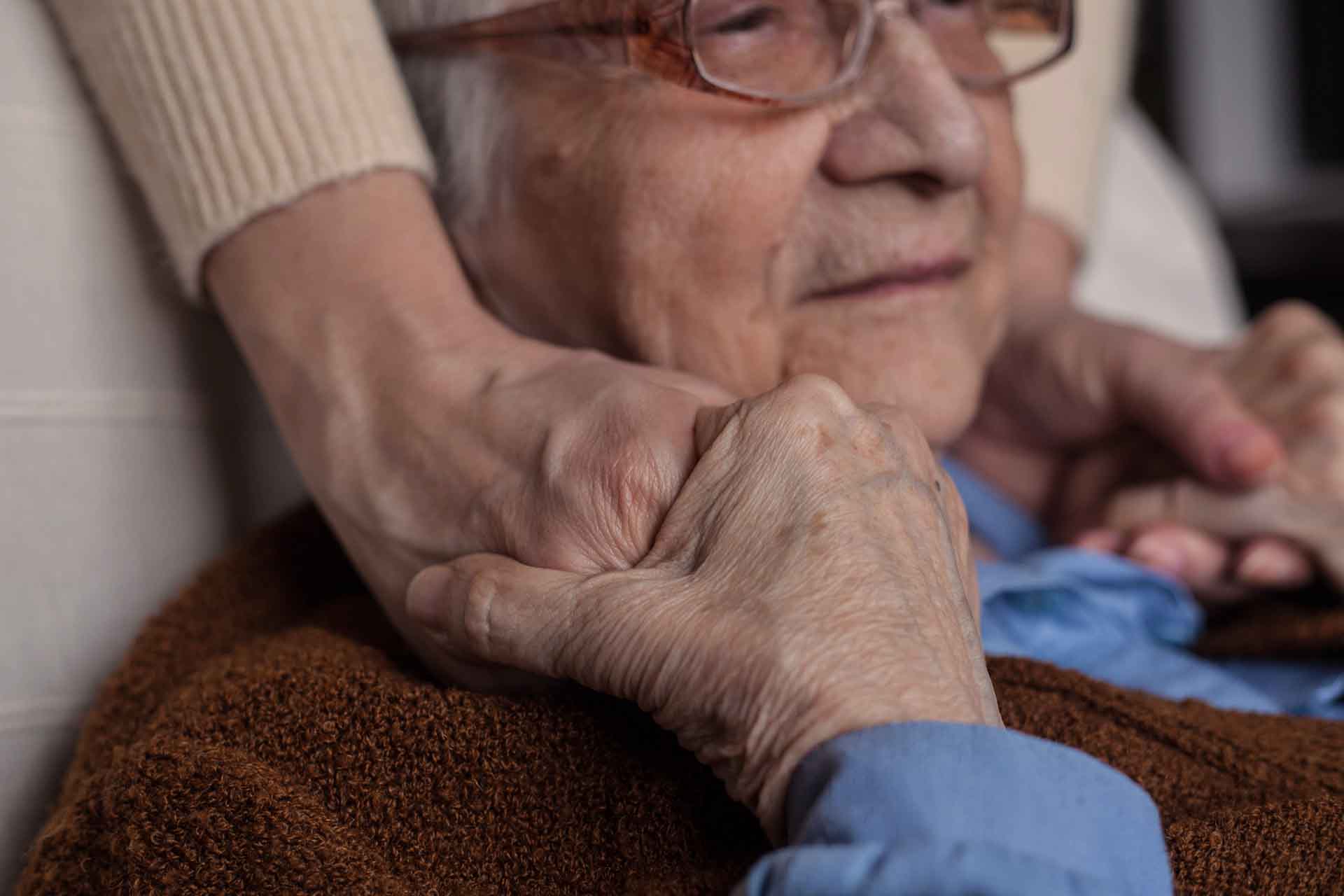Choosing hospice care for a family member is never easy. The decision comes with a lot of heavy emotions, from sadness about the inevitable changes in your loved one’s health to fear that you’re making the wrong decision.
Unfortunately, hospice misconceptions can make this already difficult time even harder. These myths often create confusion, deepen feelings of guilt, and prevent some families from reaching out for the support they so desperately need.
In this blog, we’ll address some of the most common hospice myths and help you understand the realities of hospice care.
Myth #1: Hospice Means Giving Up Hope
Many believe hospice means giving up hope. However, hospice is not about surrendering to death—it’s about prioritizing comfort, dignity, and quality of life when a cure is no longer possible. It’s a shift in focus, not in values.
Far from being a place of despair, hospice can be a source of deep meaning and connection. With the help of an interdisciplinary care team, patients regain control over how they spend their remaining days. This often allows them to engage more fully with loved ones.
Myth #2: Hospice Is Only for the Last Few Days of Life
One of the most common hospice misconceptions is that it’s only for the very end of life. Because of this misunderstanding, many families put off getting support they could use much sooner.
The reality: Hospice is designed to help patients and families for months—not just days. Medicare guidelines allow patients to begin hospice when a doctor certifies a life expectancy of six months or less. Services can continue as long as they still meet eligibility.
Early hospice referrals are linked to better outcomes. With expert pain and symptom management, patients can spend more meaningful time with loved ones. Families can also receive the support they need to prepare for the next chapter.
Myth #3: Once You Choose Hospice, You Can’t Change Your Mind
Hospice is often seen as a final, irreversible decision. Families worry that once they choose hospice care, they can’t change their minds.
This isn’t the case. Patients can revoke hospice care at any time if their condition improves or they want to receive curative treatments. And if hospice becomes appropriate again later on, they can re-enroll without penalty.
No matter what, patient autonomy is the top priority of hospice care. Hospice empowers patients to live life the way they want to live it.
Myth #4: Hospice Hastens Death
Another misconception is that hospice medications and practices hasten death. This fear can make families hesitant to choose hospice, worried it might shorten their loved one’s life.
The reality: Hospice is not at all about speeding up death. In fact, studies have shown that patients who receive hospice care may live longer than those who don’t.¹ Instead, hospice is about improving quality of life by managing pain and symptoms.
This compassionate approach is grounded in strict ethical and medical standards. While medications are used to manage discomfort, they are carefully dosed to relieve symptoms—not to sedate unnecessarily.
Myth #5: Hospice Is Only for Cancer Patients
Many people associate hospice care with cancer and think it’s exclusively for those in the final stages of the disease. This is a common example of hospice facts vs. fiction.
In reality, hospice is available for individuals facing a wide range of life-limiting illnesses, including heart disease, dementia, chronic obstructive pulmonary disease (COPD), kidney failure, and neurological disorders. Care is tailored to each condition.
For example, if a patient has been diagnosed with dementia, hospice focuses on managing behavioral symptoms and providing personalized care to improve quality of life. This may include medication for symptom control, dietary support, caregiver education, and respite care.
For patients receiving COPD care, hospice focuses on managing breathing difficulties and improving comfort. This includes medications to alleviate symptoms, breathing exercises to improve lung function, nutritional advice, and regular visits from a skilled nurse.
Myth #6: Hospice Requires You to Have a DNR Order
Another hospice myth is that patients must have a “Do Not Resuscitate” (DNR) order to receive care. A DNR is a medical order that tells healthcare providers not to perform CPR if a person’s heart stops or they stop breathing.
The reality: A DNR is not required to receive hospice care. Hospice professionals understand advance care planning is deeply personal, and will work with patients and families to respect their individual choices regarding resuscitation.
Most hospice providers offer compassionate guidance with advance care planning, taking time to explain available options, clarify unfamiliar terms, and help document important decisions. However, the goal is to provide clarity and support—never to pressure families into choices they’re not ready to make.
Myth #7: Hospice Means You’ll Be Heavily Medicated
Some people worry that choosing hospice means being kept in a constant fog, unable to communicate or enjoy time with loved ones. This is another example of hospice facts vs. fiction.
In reality, hospice is about honoring how someone wants to spend their final days—not limiting their experience. Hospice teams take a personalized, symptom-based approach, carefully adjusting medications to meet each patient’s needs without unnecessary sedation.
When appropriate, non-medication strategies such as massage therapy, calming music, aromatherapy, or guided relaxation techniques are also used. These options allow patients to remain present for the people and moments that matter most.
Myth #8: Hospice Is Too Expensive
One of the biggest hospice myths is that it’s too expensive for the average family. This misconception keeps people from seeking support.
Fortunately, the Medicare Hospice Benefit covers virtually all costs for eligible patients, as long as they meet the necessary criteria. In addition to Medicare, Medicaid and many private insurance plans also offer coverage for hospice care.
Typically, insurance covers visits from doctors, nurses, and aides; medications for pain and symptom relief; medical equipment like hospital beds and oxygen; and counseling services. Many plans include respite care and grief counseling for families as well.
At Carolina Caring, we believe no one should be denied compassionate end-of-life care because of financial limitations. With this in mind, our team works closely with families to explore coverage options. Financial assistance is also available through the Carolina Caring Foundation.
Myth #9: Hospice Is Only Available in Facilities, Not at Home
The term “hospice” often evokes images of hospitals and care facilities, leading some to believe they must leave the comfort of their home to receive care. This is another hospice misconception.
The reality: Most hospice care happens at home. Home-based hospice services bring compassionate, expert care directly to the patient’s doorstep, allowing them to remain in a familiar environment surrounded by loved ones. Even specialized services, such as cardiac care, can be delivered at home.
Hospice can also be provided in other settings, such as assisted living communities, nursing homes, and inpatient hospice units. Hospice is designed to be flexible and meet patients where they are.
Myth #10: Hospice Is Just for the Patient, Not the Family
There’s a misconception that hospice care is only for the patient. However, hospice is designed to support the entire family through one of life’s most difficult journeys.
From the moment hospice care begins, the hospice team walks alongside loved ones, helping them navigate both the emotional and practical challenges of caring for someone with a life-limiting illness.
Social workers and counselors are available to help family members process difficult emotions, answer questions, and develop coping strategies; nurses guide family members through the patient’s care plan, medications, and any necessary procedures; and volunteers provide valuable companionship, helping loved ones with tasks or simply offering a listening ear.
And after the patient’s passing, the hospice team doesn’t just walk away. Grief support is offered for up to 13 months, whether through one-on-one therapy or group counseling.
Finding Compassionate Hospice Care in North Carolina
Hospice has a long history of supporting those facing life-limiting illnesses. Despite this, myths and misconceptions about the care model persist, often creating confusion for patients and families seeking assistance.
At Carolina Caring, we understand how overwhelming this time can be. Fortunately, our compassionate team is here to ensure your loved one receives the personalized care they deserve. We also provide resources and emotional support for families, helping you navigate this journey with confidence and peace of mind.
If you have any questions about hospice care, we’re here to help. Contact Carolina Caring today to learn more about how we can support you and your loved one.
Citations
- Connor, S. R., Pyenson, B., Fitch, K., Spence, C., & Iwasaki, K. (2007). Comparing hospice and nonhospice patient survival among patients who die within a three-year window. Journal of Pain and Symptom Management, 33(3), 238–246. https://doi.org/10.1016/j.jpainsymman.2006.10.010



